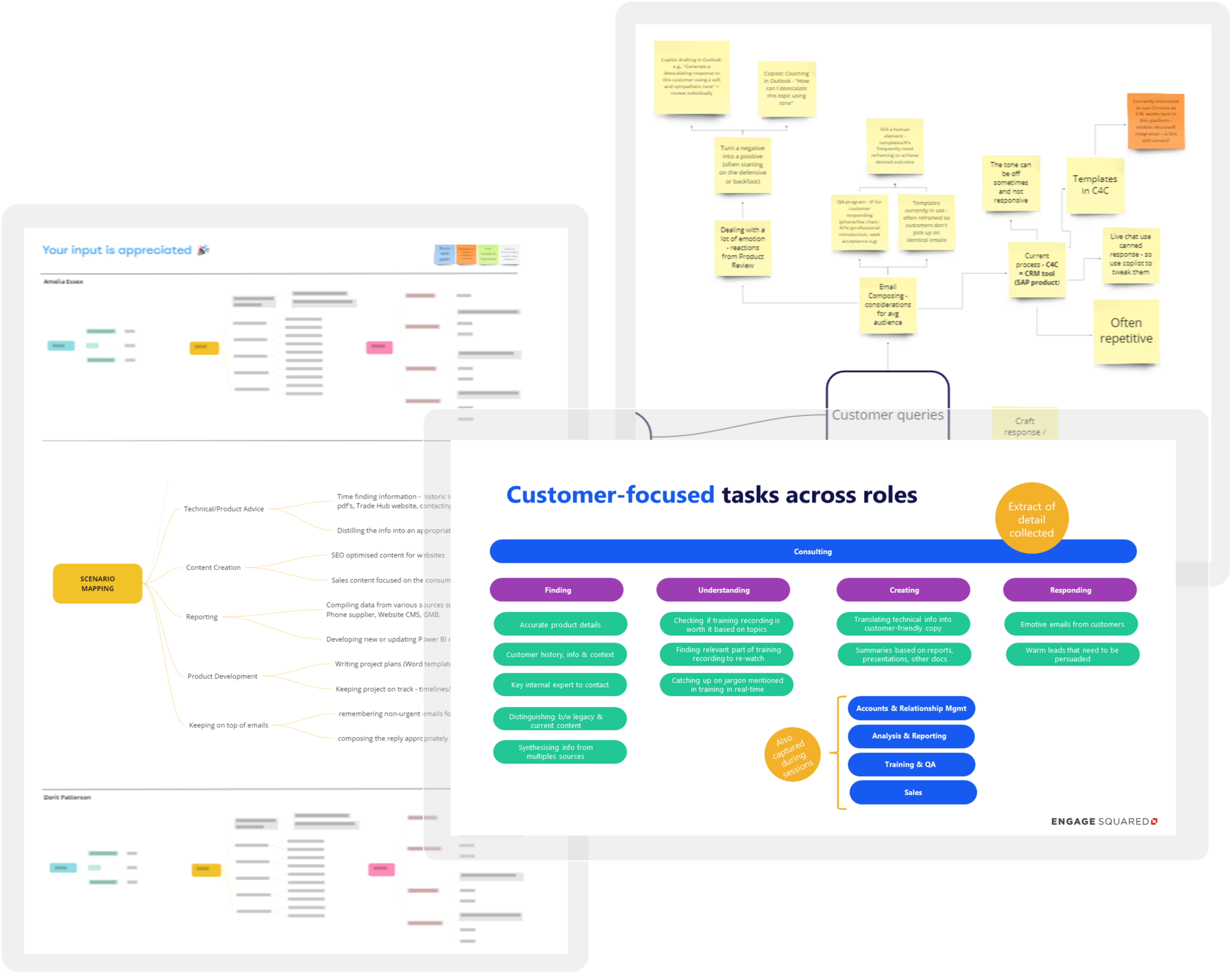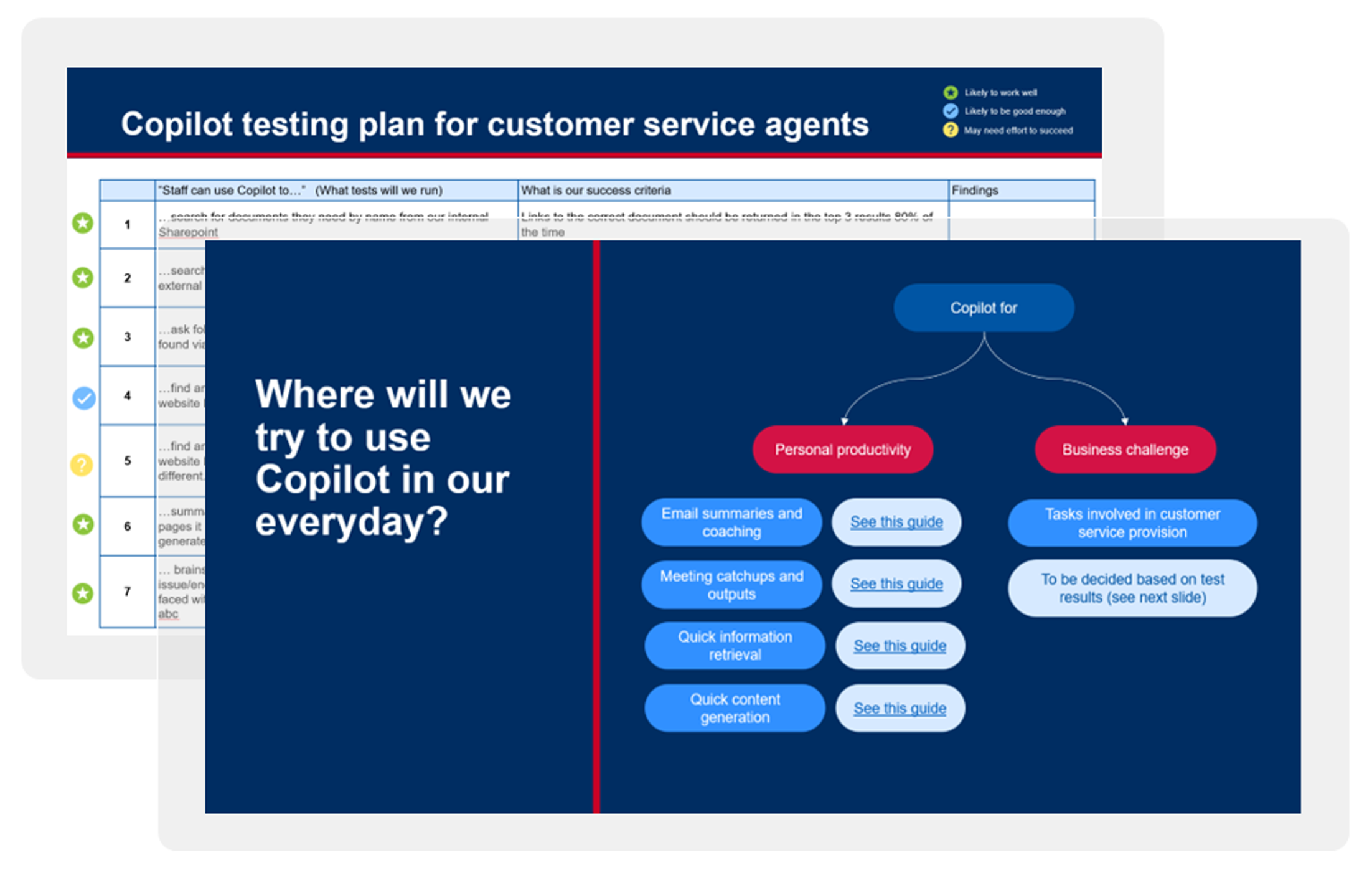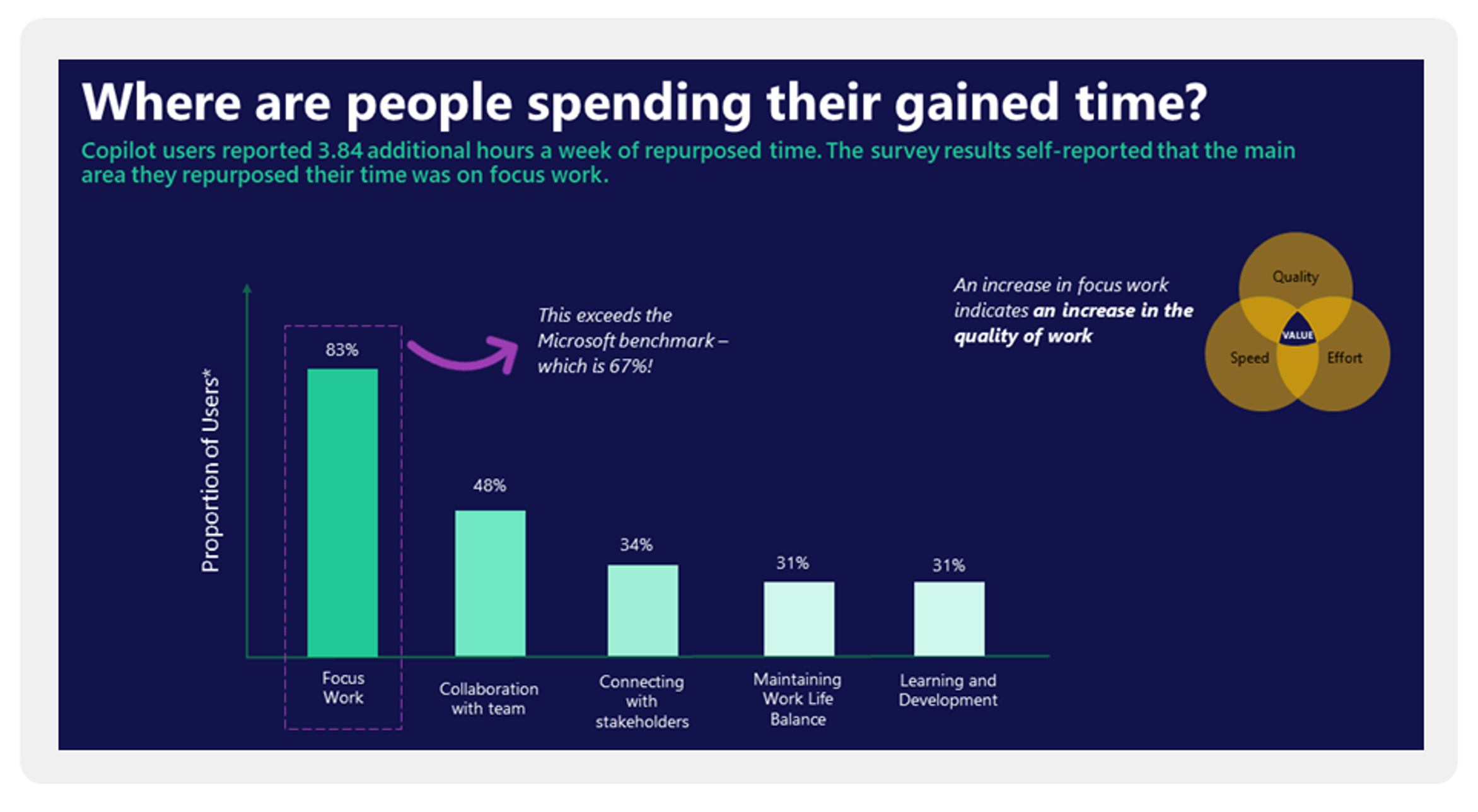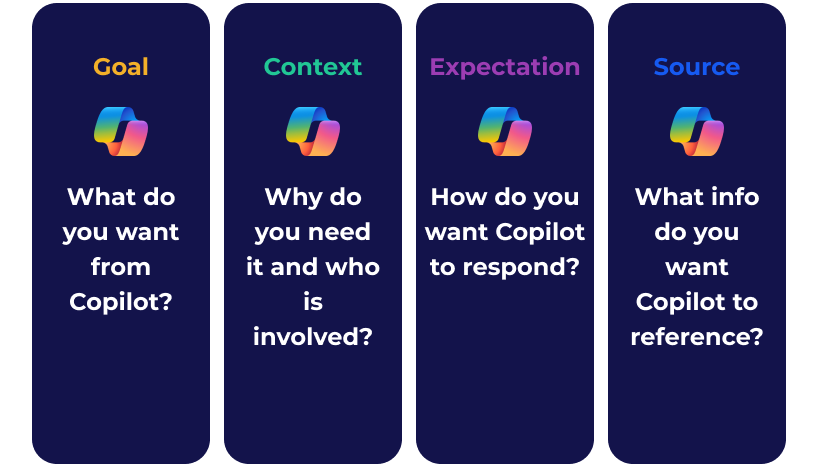The current noticeable rush to explore the potential of generative AI is understandable. As organisations strive to get more done in less time at a faster pace within shrinking budgets, the desire to find novel ways of getting work done is increasing.
When it comes to general purpose technologies like AI, finding where it brings value for your organisation begins by thinking about your people, with your people! Leading with curiosity alongside those we want to solve problems for fosters a more human-centric vision of success.
For the past year, we’ve been assisting organisations across a range of industries with their M365 Copilot adoption journeys. If you are about to launch a pilot, here’s some tips for success:
Start with strategic intent
Engage your executive team from the beginning. Educate them on AI possibilities and understand their strategic goals. Align your project with organisational objectives and values to secure visible sponsorship, encouraging participation from other stakeholders.
Seek opportunities
The executive team’s strategic drivers will guide your focus. Involve a diverse group of staff in the discovery process. Identify which tasks and processes are time-consuming, repetitive, or manual. Discussions can highlight use cases and scenarios worth experimenting with.

Assess technical readiness
Evaluate your environment. For M365 Copilot to be effective, ensure staff can access relevant information sources. Plan migrations if valuable content is in network file shares or consider graph connectors for third-party systems. Copilot can significantly reduce the burden on staff retrieving information from multiple sources, if it has access to relevant content.
Understand adoption needs
Don’t assume you know what staff need. Ask them! Understand current interest and sentiment towards AI technologies. Identify knowledge or skill gaps and what would motivate staff to embrace new working methods. Use surveys, workshops, and focus groups to understand barriers and motivators to adoption.
Design for agreed outcomes
Align on desired outcomes with leadership and stakeholders based on gathered information. Agree on what success looks like within your constraints. Design a program targeting these outcomes using ideas from staff. Without clear outcomes, focus may scatter, and expectations may shift.
Mobilise your community
Due to the still emerging nature of AI technology, experimentation by a variety of subject matter experts is vital. Recruit a diverse range of staff for governance and champion networks. Encourage upskilling, debating, and sharing learnings in a safe space. Connect early adopters through showcases, online communities, drop-in sessions, and co-working calls to cater to various learning preferences.
Encourage structured experimentation
Copilot offers many possibilities across the modern work stack, which can be overwhelming. Break down exploration into manageable chunks. To reduce cognitive overload, use a ‘campaign’ approach to introduce scenarios or applications over time. Focus conversations during each campaign on similar use cases to promote collective learning. Encourage staff to create personal testing plans outlining use cases, replication numbers, and acceptable outputs so they can share their learnings easily.

Monitor progress
Before launching your pilot, establish how you’ll monitor and report progress. Gather qualitative and quantitative data to evaluate outcomes. Use the Viva Insights Premium dashboard to track Copilot’s impact across departments. Supplement data with surveys and retrospectives for direct feedback from staff. Routine monitoring ensures you can tailor your enablement activities based on changing needs.
Socialise findings
Keep the pilot group and stakeholders informed about progress. Staff involved in pilots want to know if their efforts are making a difference. Share adoption stats, acknowledge efforts, and celebrate successes and failures to maintain momentum.

Becoming a future-ready organisation means equipping your people with the mindset and skills to lead the way. Your Copilot pilot is an opportunity to empower early adopters and advocates. Let them influence what use cases are explored and design your enablement activities based on what you hear from them. As Jared Spataro, CVP Modern Work at Microsoft suggests:
About the author
Parul Sharma is a senior consultant with the Change and Transformation practice at Engage Squared. Parul is passionate about facilitating change in ways that enhance the employee experience and positively influence company culture. If she was to be reincarnated as a Microsoft emoji, it would probably be the earnest heart-eyed one 😍
Like what you see?
If you’re intrigued by the potential of Copilot but unsure where to start, Engage Squared is here to help. Our team of Modern Workplace experts can guide you through every phase of your Copilot journey. We offer tailored services to help you build a strong business case, identify impactful scenarios, modernise your technical environment, and ensure high adoption.
Ready to explore how Copilot can transform your organisation? Reach out to us to set up a Copilot pilot and experience firsthand how Engage Squared can support you in making the most of this innovative technology.
Book your readiness assessment

